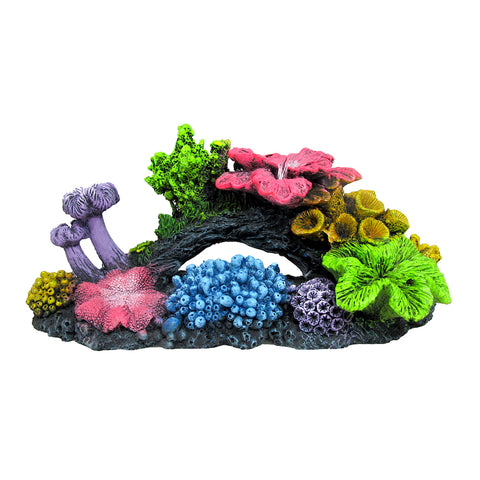
Marina Hawaiian Reef
FACTS ABOUT HAWAII’S CORAL REEF ECOSYSTEM Corals are living animals that eat, grow and reproduce. The reef ecosystem feeds, shelters and provides habitats for fish, protects the shoreline from wave and sand erosion and creates Hawaii’s famous white sand beaches and underwater paradise. The Hawaiian Islands have 410,000 acres of living reef in the main islands alone, more than the landmass of Oahu. A large percentage of coral reefs under US jurisdiction are in the NWHI. Hawaii’s living reef ecosystem, sometimes referred to as the “rainforest” of the sea, has more than 7,000 known species of marine plants and animals. Hawaii’s coral reef ecosystem, because of its isolation, has more than 1,250 unique species of marine life that can be found only on Hawaii’s reefs. Over 25% of all marine life is endemic to Hawaii and scientists are finding new species regularly. More than 500 species of marine algae have been identified in Hawaiian coastal waters. Algae produce more oxygen than all the land plants in the world, combined. They are also an important food source for the ocean’s fish and other animals), produce compounds found in gelatin, jam and many other food products. Coralline algae create much of the sand on Hawaii’s beautiful beaches. Marine preserves help promote reef life. A good example is Hanauma Bay. Designated in 1967, Hanauma Bay is Hawaii's first marine life conservation district. Because of its protection from fishing pressure, the weight of fish (biomass) in Hanauma Bay is 3-4 times than the estimated abundance for most reef sites on Oahu. A Presidential Executive Order in 2000 set aside 84 million acres of ocean around the Northwestern Hawaiian Islands as the Northwestern Hawaiian Island Coral Reef Ecosystem Reserve, the largest conservation area ever established in the United States. The majority of the nation’s coral reefs are found around the Northwestern Hawaiian Islands (the 10 mostly uninhabited islets and atolls extending 1,200 miles northwest of the main Hawaiian Islands).




